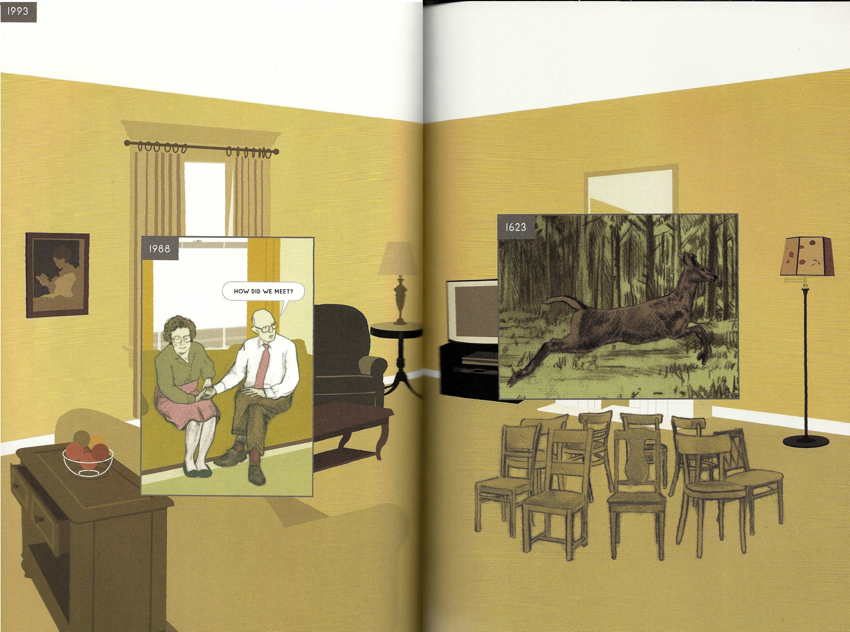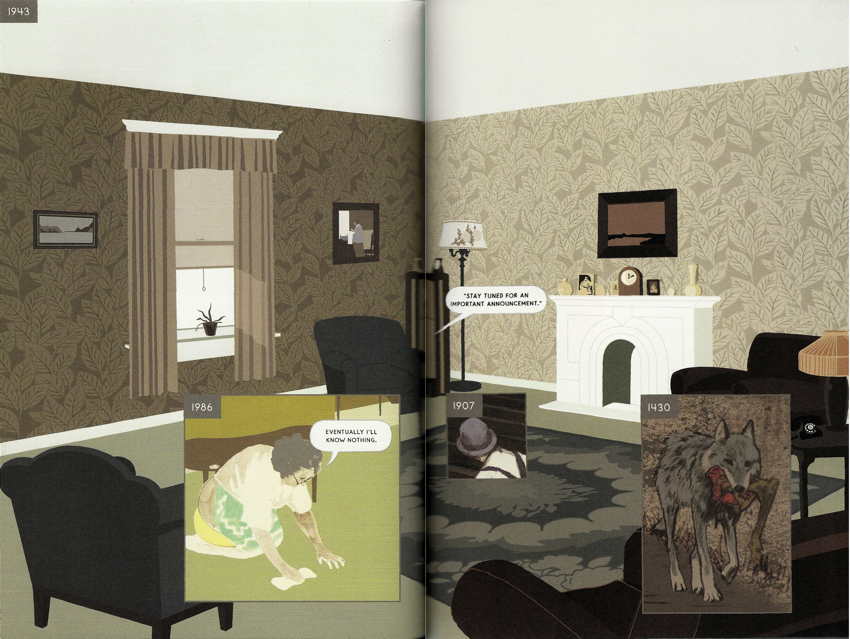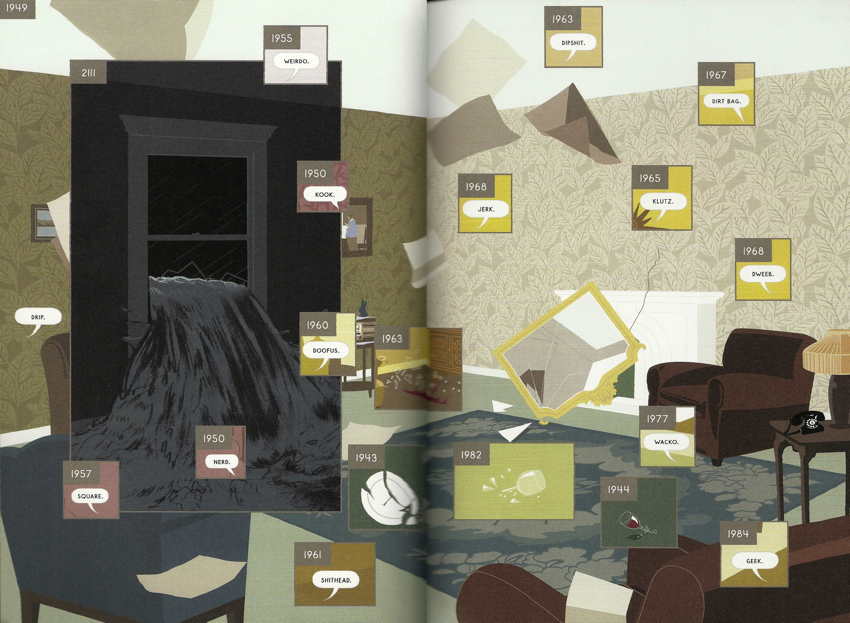Here by Richard McGuire, an update of an old chapter in Raw that I don’t remember, takes its second shot at a new graphic form and hits the bullseye dead centre.
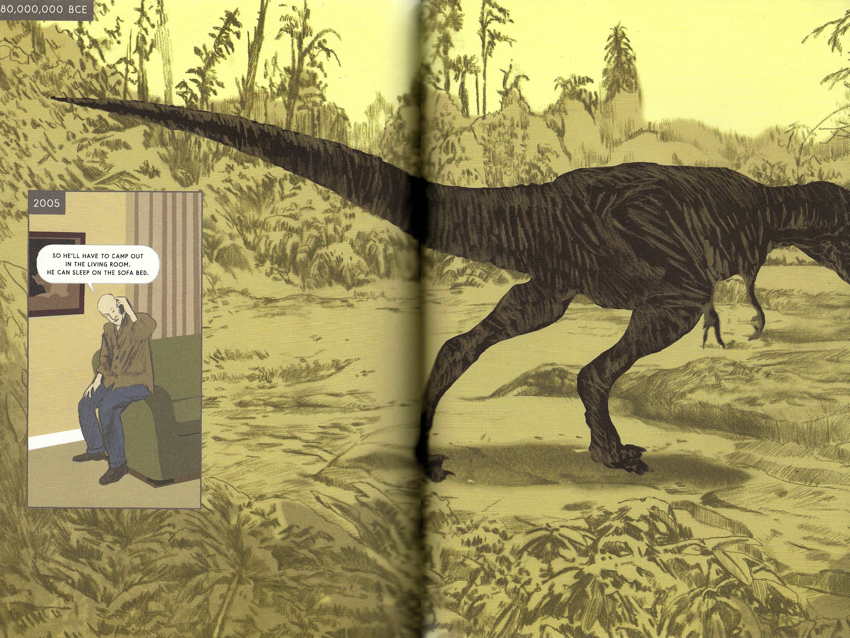
We are situated at a fixed point on the earth; each spread shows a different year, with inset boxes on each spread showing other years. A simple, powerful concept. And now no one, not even McGuire, will be able to do this again without coming off as derivative.
The book’s typography is poor, and the aboriginal language shown (with diacritics) is surely a simulation. But you don’t need to read this book, merely look at it, and its lesson is profound.
-
We are shown the earth billions of years ago and thousands of years into the future, which by implication means the entire lifespan of the planet. We see the planet when it was barely more than a lake.
-
One way or another, everyone, and every being, portrayed in Here’s pages will die. Even beings in the future will die.
-
Observed from this timeless vantage point (perhaps not located on solid ground in the first place, adding to the noncorporeal godlike sense), one comes to understand that, however important life and death are, the only response is one of acceptance, of equanimity bounded only by the creation and destruction of the world.
-
Even after the earth is destroyed, the same vantage point will still exist. What will we observe then?
The lessons of Here are as grand, cosmic, and profound as I make them appear. Reading it, which can and should be done in one sitting, radically recalibrated my sense of time. “We’ll see how long that lasts” is the obvious cynical reaction, but I get the impression the answer is “forever.”
Runner-up
Second greatest surprise of the year was provided by Norwegian Wood, which really is about chopping down firewood in the Islamic Republic of Norway. The English version is a beautifully designed object and is only slightly overlong.
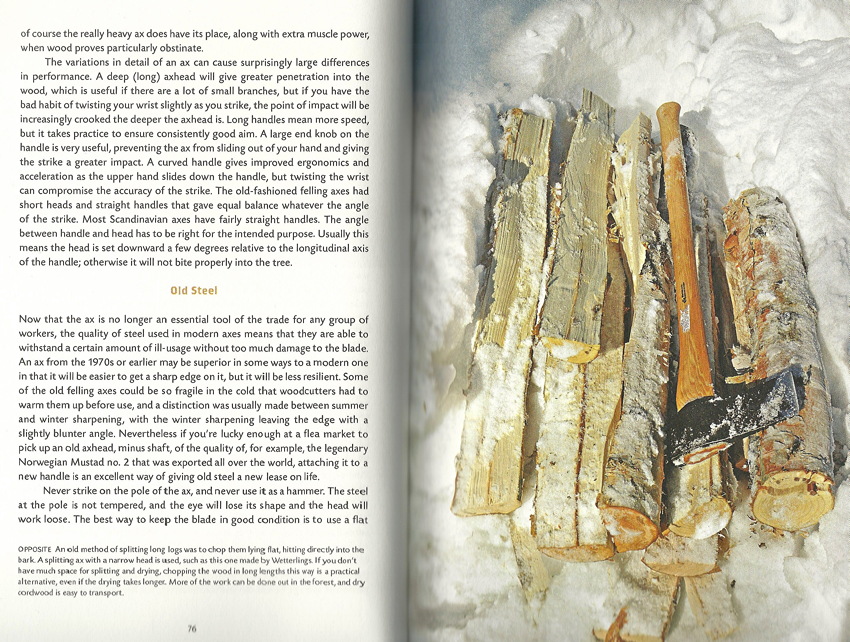
I now have a bizarre and counterfactual inkling to wield an axe.
